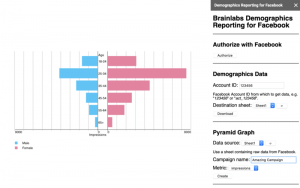Whenever there was a government assessment of the lockdown situation, I would literally stick to the screen for possible answers for the future. As a consumer, of course, one asks oneself what the situation will be like after the easing of the lockdown and how things will be in the inner cities.
The debate about what role downtown stores will play is not new, with significantly more stores closed than opened in the past decade. According to estimates by PWC, 1,234 more stores closed than new ones opened in UK city centers in early 2019. It can be assumed that this number will increase post Covid-19.
One of the greatest challenges that brick-and-mortar retailers will face post the pandemic is the question of what the relationship between cash flow and profitability, security requirements and operating costs will look like.
There is no panacea for this issue because every problem is different and every business has its own DNA. Let’s first take a step back and shed light on the factors that are driving the change in physical retail store.
Changed habits when visiting the store
1. Sober transactional mentality among consumers
To say we are preparing for war may sound like an exaggeration, but it feels like it. During the lockdown, only essential stores such as supermarkets, pharmacies and takeaways were allowed to remain open (in Great Britain even fast-food chains such as McDonalds and KFC had to close). According to the “Maslow pyramid of needs”. We literally fell back on the basis of the pyramid and thus the satisfaction of the ‘physiological needs’. In other words, we have been busy satisfying our basic needs for survival for the past few weeks. We are forced to reassess our behavior, needs and priorities.
2. The health and safety of employees and customers have priority
For many, visiting the store automatically means wearing a mask and gloves and keeping a distance of two meters from other people. Sometimes there is even tension if this distance is not maintained. The store operators help in this situation by limiting the number of customers in the store and only allowing one person to shop for the entire family. All previous expectations such as social aspects and seamless experiences when visiting a store are now being thrown overboard, people accept change for the sake of their own safety. Moreover, they are only ready to shop in a store if they feel safe.
3. Moved interaction points in the customer journey
The figure below shows a simple three-dot representation of customer interaction in the context of stores.

Figure: Customer interaction history: time versus place of interaction
If we graphically display the place of interaction in conjunction with the length of stay, it becomes clear that before Covid-19, the majority of customer interaction took place in the store. The aim was to create a seamless experience by avoiding queues, shorter payment processes, etc., or to make shopping a feel-good experience for the customer through virtual reality, digitized product information and individual service.
In the days after Covid-19, customers are now ready to wait in front of the store for the next customer to be allowed to enter the store. However, it depends on the type of shop, because some shopping processes cannot be shortened. In some shops, for example in supermarkets, customers shop less often, but instead buy according to a list. It’s not that there is no interaction with the retailer, it is just happening elsewhere.
4. Motivation meets time benefit
As the changes progress, customers will think twice about which retailer they spend their time with. You will wonder which store to go to and how much time it makes sense to allow for it. For example, how can fashion retailers that do not sell everyday necessities motivate their customers to visit their stores?
A friend of mine recently wanted to buy some garden items. Since she couldn’t find what she was looking for online, she decided to visit the DIY store and garden center. After driving to the store, waiting in line, and finally getting to the store, she had only managed to get hold of three items out of five. She had invested more than an hour and a half and found it wasted time. She was extremely frustrated and has vowed not to go into any store in the near future. In that case, it was only about one store, but what if a customer has to go to several stores?
How can new concepts and opportunities be found in the face of this challenge?
1. Convenience and security are the key to customer loyalty
The stores definitely need a clear Covid-19 concept of measures to bring customers back. The customer wants security and actually wants to recognize efforts. Measures can be as simple as a limited number of customers in the store, predetermined walking routes or distance markings on the floor. In Austrian supermarkets, both employees and customers have to wear protective masks, which are made available to customers. Another possible measure would be to provide customers with information to help them make decisions and thus ensure their own safety. This includes, for example, real-time information on the number of people in the shop and in the aisles.
2. Invest in technology that brings real value in times of need
If you are looking to be agile, it is essential to have the flexibility to adapt to challenges immediately and retailers can turn to technology for this purpose. To do this, you must make a realistic assessment and determine whether the technology being used in the store will be useful in the event of an unforeseen event.
Much has been made of experimental retail using immersive, customer-facing technologies like augmented reality and virtual reality to enhance the in-store experience. But these technologies can be quite expensive and their performance is questionable if the retailer must respond quickly to situations that change suddenly. Retailers should consider making smaller investments in technologies such as retail management software that provide the real value and flexibility needed on a daily basis to adapt quickly.
3. Focus on the specifics of the physical experience
During the lockdown, I had the chance to take a virtual stroll through a museum. The concept was simple: replicating a museum visit online. After a few minutes I got bored and didn’t feel like it anymore, until I finally gave up after minor technical breakdowns.
My lack of enthusiasm reminded me of a seminar on art criticism that I had attended a few years ago. My professor emphasized that you can read as many websites and books about a work of art as you want, it never replaces the experience of actually being able to see it with your own eyes. The critical perception is strongly determined by noise, smell, environment and dimensions. Only by looking physically will it be possible to grasp the texture of the brushstroke or the material of the work of art.
It is precisely these reasons that make the physical store so unique. The touch of the material, the weight of the objects, the smell and the feeling that the room evokes are all aspects that influence the customer’s experience. In order to motivate people to visit the store again, we have to think carefully about which elements shape the individual environment.
4. Time well spent
Since customers are not very motivated to visit the store, retailers need to ensure that the customer makes every minute they spend in the store. For example, stores could use technologies that indicate the availability of an item so that the customer does not stand in line unnecessarily and leave the store disappointed.
Since many shops have fewer customers, retailers have to strengthen interaction through individual value-added services. The business model may look different, but luxury brands are used to operating with fewer customers but highly personalized services. Burberry, for example, uses a magic mirror and tablet to personalize the experience. It’s worth taking a look at how the company uses its space and resources.
5. Realignment of the customer journey
There’s now need to position the customer experience as the fundamental center of business strategies and an efficient customer journey can define the success or failure of a business. The chance to interact with the customer is now shifting to the place in front of the store. Queues could become the rule and that means that the stores would now have to use the ‘time’ and resources differently than before Covid-19. The Livraria Lello bookstore in Porto is considered one of the most beautiful in the world. It is said that JK Rowling found the inspiration for her Harry Potter saga here. To limit the number of tourists, the store now uses a visitor ticket system with a greater focus on the customer experience without neglecting the human factor.
6. Escape to the local environment
Many countries around the world are closing their borders and imposing a 14-day quarantine on visitors. No wonder the aviation and travel industries are hardest hit by this crisis. Consumers also shy away from using public transport and are now relying more on the local environment for their shopping pleasure. More than ever before, brick-and-mortar retail is challenged to deepen customer loyalty. Customer engagement is key to getting them to revisit the store and shop, so whenever possible, retailers should do their best to maintain strong customer relationships.
Time to rethink
In such a volatile market, physical retail stores have to rethink and open up new opportunities. To do this, retailers have to come up with new concepts and reposition themselves in order to build a bond with customers, create trust and make visits to the store attractive. This change can lead to a redefinition of modern customer needs, whereby the focus on the satisfaction of the basic needs for the customer journey and the motivation to visit stores is crucial.
Business & Finance Articles on Business 2 Community
(71)
Report Post






